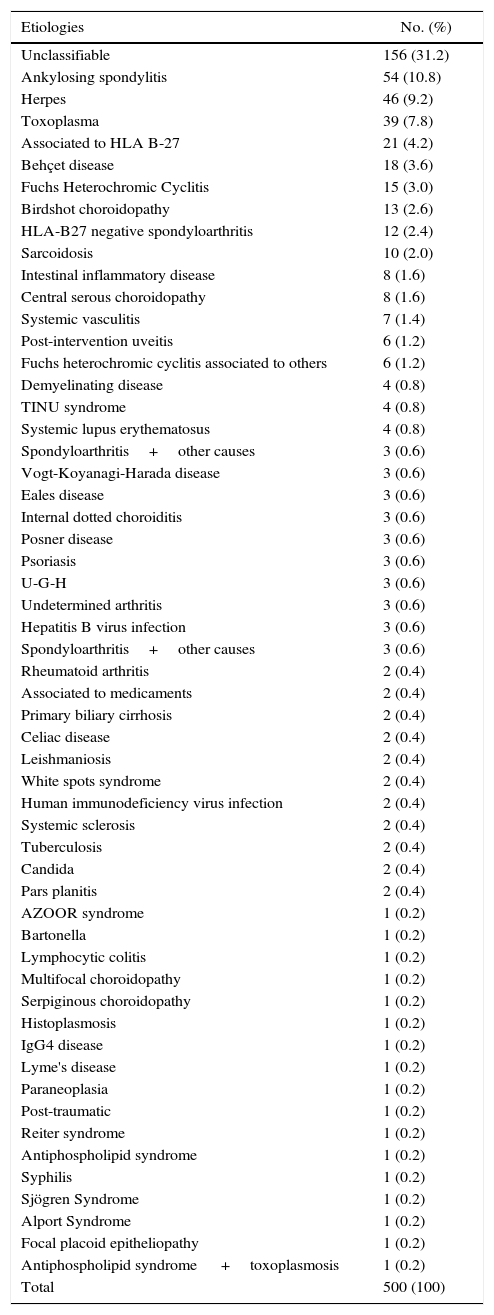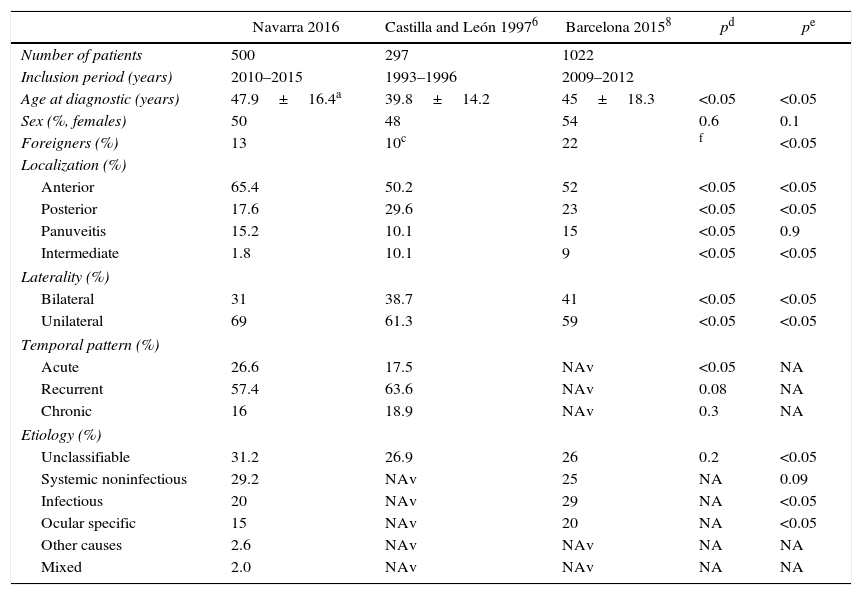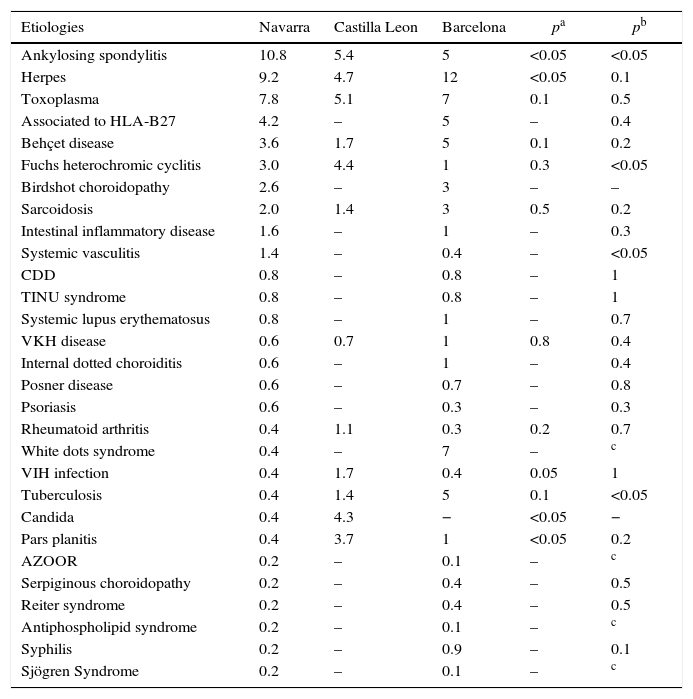To describe the main characteristics of a cohort of patients with uveitis referred to a multidisciplinary unit in northern Spain.
Material and methodsRetrospective analysis of clinical records of patients evaluated in the Multidisciplinary Unit of the Navarra Hospital Complex from the period January 2010 until March 2015. An analysis was performed on the demographic characteristics, origin, types of uveitis, laterality, and etiology. The present series was also compared with 2 previous series from Castilla y León and Barcelona.
ResultsA total of 500 patients were identified, with a mean age of 47.9±16.4 years, with 50% women. The most frequent type of uveitis was anterior uveitis (65.4%), followed by posterior uveitis (17.6%), panuveitis (15.2%), and intermediate uveitis (1.8%). The origin was unclassifiable in 31.2%, followed by non-infectious systemic disease in 29.2%. Ankylosing spondylitis was the most frequent cause in 10.8% of patients, followed by herpes infection in 9.2%, and toxoplasmosis in 7.8%, respectively. Compared with the 2 other cohorts, the present cohort showed a higher proportion of unilateral anterior uveitis. Furthermore, the patients from the Navarra series had a higher prevalence of unilateral and idiopathic uveitis compared to the series from Barcelona.
ConclusionsThe main characteristics of the present cohort of patients with uveitis are similar to those of patients from other regions of our country. Unilateral anterior uveitis and idiopathic uveitis were the most frequent in our series.
Describir las características de los pacientes con uveítis valorados en una unidad multidisciplinar de referencia del norte de España.
Material y métodosAnálisis retrospectivo de los pacientes con uveítis valorados en la Unidad Multidisciplinar del Complejo Hospitalario de Navarra desde enero del 2010 hasta marzo del 2015. Se analizaron las características demográficas, procedencia, tipos de uveítis, lateralidad, etiología y se compararon estas características con las de 2series de pacientes de Castilla y León y de Barcelona.
ResultadosSe analizó a un total de 500 pacientes, 50% mujeres y con una edad media de 47,9±16,4 años. El 65,4% de las uveítis fueron anteriores; el 17,6%, posteriores; el 15,2%, panuveítis y el 1,8%, de localización intermedia. El 31,2% fueron no clasificables, seguidas de la enfermedad sistémica no infecciosa con el 29,2%. La espondilitis anquilopoyética (10,8%), la infección por virus herpes (9,2%) y la toxoplasmosis (7,8%) fueron las 3causas más frecuentes. En comparación con las otras 2series, en la de este estudio se encontró una mayor proporción de uveítis anteriores unilaterales. Además, en Navarra los pacientes presentaron mayor prevalencia de uveítis anterior unilateral y de uveítis idiopáticas en relación con la serie de Barcelona.
ConclusionesLos datos de nuestro estudio demuestran características similares con las uveítis de otras regiones de nuestro país. Las uveítis anteriores unilaterales y las idiopáticas fueron las más frecuentes en nuestra serie.









